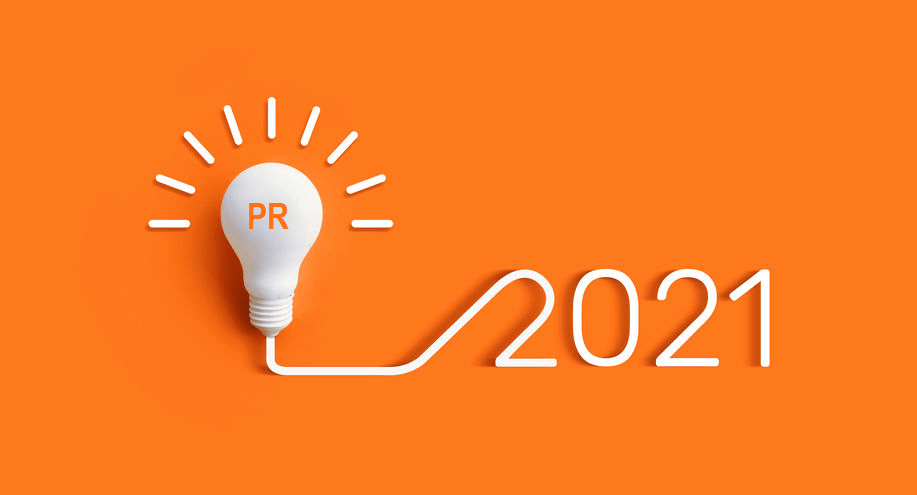The Digital Transformation of Public Relations Has Arrived: 5 Trends to Watch in 2021

Ben Chodor, President, Intrado Digital Media
Every January, the public relations industry has a long-standing tradition of examining the year that’s passed to predict what lies ahead. Trying to predict anything for 2021, though, is a complicated and challenging exercise. PR professionals have always been admired for their ability to adapt to change, but 2020 was certainly a stress test for their agility.
Public relations professionals rose to the challenge of incredibly complex communications efforts – guiding brands through everything from pandemic-related lay-offs and furloughs to employee health and safety protocols to values-driven campaigns in response to important social issues. It was a difficult year, but it also reaffirmed the industry’s ability to be agile, think bigger and above all else – communicate with purpose. The result was more innovation and transformation in PR in just a few short months than we’ve seen over the last decade.
Here are the five biggest trends for PR professionals to pay attention to in 2021:
1) Brands Begin to Measure the Impact of Purpose-Driven Messaging on Public Perception:
In 2020, PR professionals helped guide brands to respond to important social issues and understand the value of a mission-driven business strategy. However, it will be important to find ways to measure these efforts to understand whether corporate values and beliefs are well-received by the public. Traditional share-of-voice (SOV) metrics are not enough to measure public perception, and PR pros will need to rethink their use of sentiment metrics, reach, and influence to identify ways to measure effectiveness in communicating mission, vision, and values.
2) Intelligent Media Monitoring Allows Communicators to Navigate an Unpredictable News Cycle
Last year brought us an incredibly unpredictable and competitive news cycle – and media relations won’t get any easier in 2021. Communicators must evolve their understanding of media monitoring beyond keywords and brand mentions and begin to identify trends in stories, analyzing when a story breaks, peaks, and who is most likely to influence coverage. Media monitoring, powered by artificial intelligence and machine learning data, can improve the accuracy of a media plan to ensure the right messaging is shared at the best possible time with the reporters most likely to cover it.
3) Executives Embrace Live Video to Drive Engagement and Connection
The shift to virtual is irreversible and while consumers have adjusted to engaging with brands online, there will be a stronger demand for interaction and engagement in 2021. While live video is often viewed by PR professionals as a ‘risk’, it’s actually the perfect medium to humanize an executive and ensure that target audiences and key stakeholders hear directly from the brand on important issues. Live video can also help PR professionals bring key messaging to the market quickly – particularly in crisis situations where there’s no time to wait for a pre-recorded production.
4) As Events Go Hybrid, PR Pros Find New Ways to Engage the Press
We’ll never go back to in-person conferences in the way that we remember them (flights to Vegas, after-hours parties, hours of shaking hands in a tradeshow booth). Attendees have learned to embrace virtual events – as demonstrated by steadily climbing attendance, engagement rates, and platform interaction. In 2021, PR pros will be challenged to find new ways to interact with the media around virtual events – from press conferences, to live demos and panels – the industry will need to make better use of event tech to stand out and create positive interactions to immerse the media in creative brand experiences that will led to coverage.
5) The Year of PR Software
2021 will spark a technology revolution in PR – pushing communicators towards innovation in their use of data, measurement and monitoring technology. The industry is ripe for disruption, with consolidation in the space, tighter agency/brand budgets, and a challenging news cycle – PR professionals will demand more from their technology. In 2021, communicators will critically audit their technology stack, rethink their needs, and ensure that they are using tools strategically. Additionally, PR pros (both agencies and brands) will be called to implement a formal technology strategy to better align with their marketing counterparts and take a data-driven approach to storytelling.
My overarching prediction for 2021 is that there’s no turning back and that the ‘new normal’ for communicators will be a continued push to adopt technology that will enable efficiency, collaboration, and ultimately, resilience. In other words, the digital transformation of public relations has officially arrived, and there’s no going back. No matter what the year ahead has in store – the need for strong storytelling and corporate reputation management remain and PR has never been more critical.
 About the Author: Ben Chodor is President of Intrado Digital Media. The company recently launched Notified, the first end-to-end workflow automation platform for PR and marketing professionals. Twitter: @s57BenChodor @Notified, LinkedIN
About the Author: Ben Chodor is President of Intrado Digital Media. The company recently launched Notified, the first end-to-end workflow automation platform for PR and marketing professionals. Twitter: @s57BenChodor @Notified, LinkedIN

